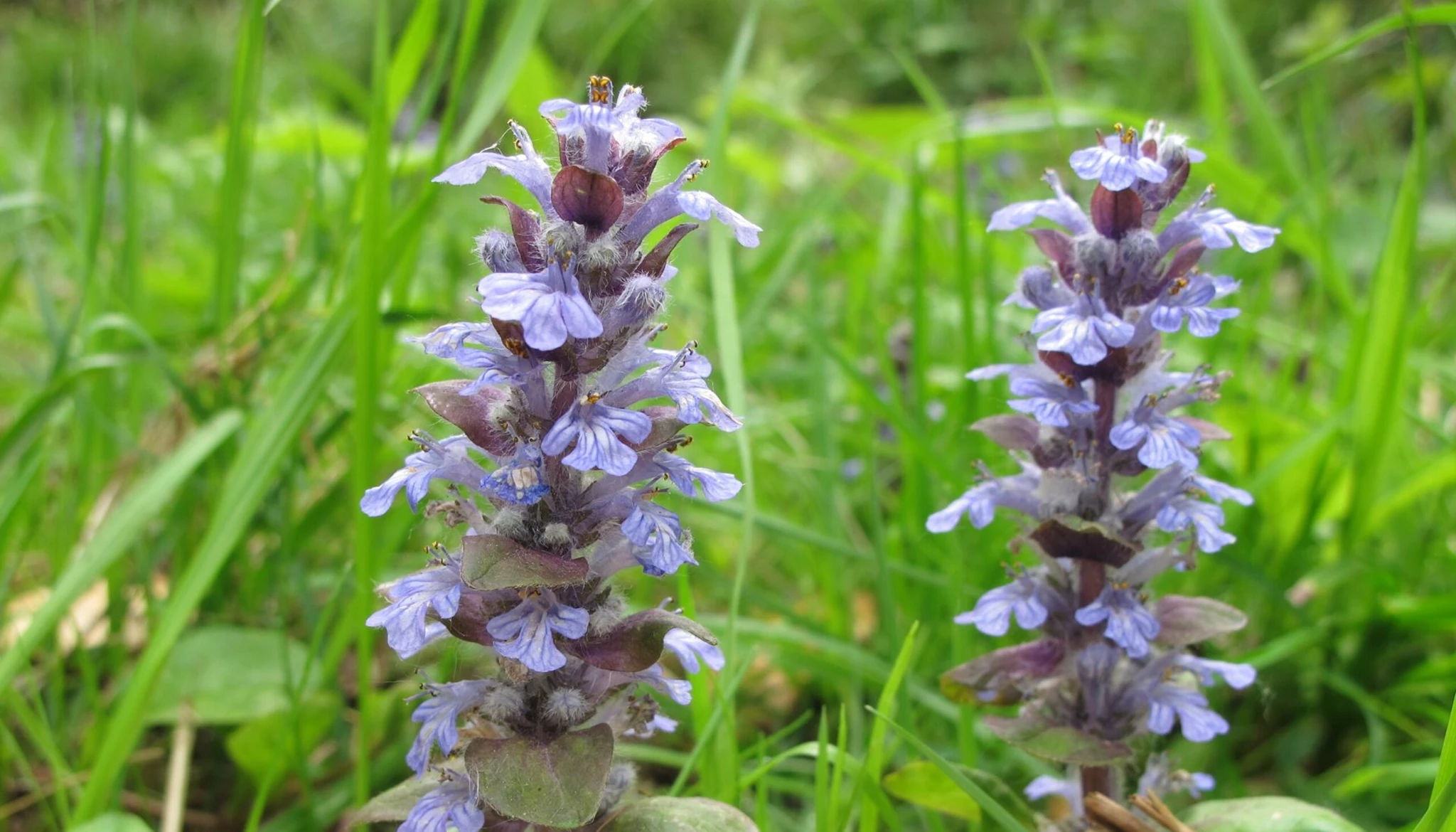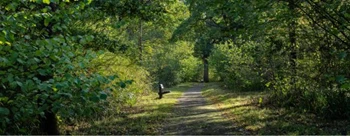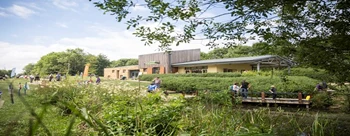Wildlife blog: Woodlands in Spring

We know that many of you are not able to get out into the parks at the moment, so we're bringing the wonders of Milton Keynes' woodlands to you with an insight into the ancient wildflower population of Shenley Wood.
Late April to May sees our ancient woodland sites at their absolute best. Now, our larger woodlands, Howe Park, Linford and Shenley Woods are carpeted with wildflowers from the familiar Bluebells and Primroses (now nearly over!) to the beautiful white stars of Wood Anemone and the attractive Bugle (pictured above), whose flowers are beloved by bumblebees.
Another really eye-catching flower is the Early Purple Orchid, and although these are far from common in our woods, their pink-purple spikes can sometimes be picked out among the bluebells. They are sometimes spotted along the ditches and wood-banks in Linford Wood and Shenley Wood.
Last year, The Parks Trust commissioned a study of the woodland flora in Shenley Wood, carried out by an expert botanist. The report of this survey includes lists of all plants recorded – 181 different species were recorded in total. Results were compared with historical surveys and it is interesting to compare the changing fortunes of different woodland plants over the years.
A number of new plant species were recorded in 2019, although a large proportion of these are non-native plants which have naturalised from local gardens. Thirty-one of the species found are classed as Ancient Woodland Indicators (AWIs) – that is, plants which are characteristic of ancient woodlands and, if found in sizeable populations, would suggest that a woodland has been under constant tree cover since around 1600. These indicators include bluebell, primrose and holly and also delicate plants such as Pignut.
Most of the AWI plants were found to have healthy populations, but one of the rarest locally, Narrow-leaved Everlasting Pea, could not be found in 2019. We will continue to monitor for this scarce, climbing plant this year and to provide the ideal conditions for it to flower.
Overall, the survey gives a very positive picture of the woodland flora and wider ecological state of Shenley Wood. The Trust will use its findings and recommendations to inform our management of the wood and ensure that it continues to thrive for future generations to enjoy.
Find a full list of ecological studies in Milton Keynes, going back to the 1970s here. If you are interested in seeing copies of any of these reports please email info@theparkstrust.com.









